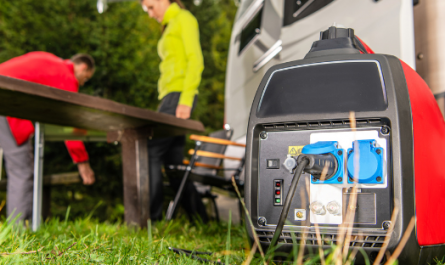You might be building a simple piping system to help you move your materials through processes. A complex multi-system with automated controls, monitoring, and more flow control is most likely an essential part of your project.
Stainless steel valves are most likely to help with flow control. However, to ensure safe and long-lasting performance or prevent typical hazards. Choosing the correct valve, such as figuring out control valve vs gate valve among available designs, is essential. In this article, we will discuss Ball and Needle Valves and their differences.When it comes to plumbing services, RS Andrews is the go-to plumbing company you can rely on at https://www.rsandrews.com/
Ball valves acquire their name from their design. At the center of the valve is a ball with a channel running through it. By rotating the ball 90 degrees, you can expose this channel to the flow stream, generating an open or closed state. Moreover, the ball valve’s short throw makes it a good choice for controlling flow in that specific position has full open or closed conditions, which are common when fast switching between states is needed.
Additionally, the design permits an extraordinary airtight seal. Since the valve seat is self-cleaning and there are few components within the valve, cleaning and maintenance requirements are minimal.
What are the types of Ball Valves?
Ball Valves have two types. One is called Floating Ball, and the other is called Trunnion Valves, which describes how the ball is positioned within the valve. Types can be subdivided into body styles and configurations.
The Floating Ball valves are considered the most popular valve. This type of valve is not fastened to the stem, allowing for much freedom. The upstream pressure helps create the seal by pressing the ball onto the downstream or rear seat.
Unlike the Floating Ball, this kind of valve is designed with a pin to prevent the ball from dislodging. This design applies to systems with high velocity. The ball is well-supported by shafts or posts on the opposite sides. The shaft may or may not be a part of the ball. However, trunnion valves reduce friction between the ball and the seal.
What are the Functions of a Ball Valve?
Needle Valves are used as needle-shaped plungers. A threaded, rotatable stem adjustment mechanism permits precise control over the location of the plunger. This also makes needle valves ideal for use in valve manifolds, which mixes multiple processing lines.
What are the Types of Needle Valves?
Different types of Needle Valves are distinguished by their mode of action. These are the following:
Threaded Needle Valve: it is manually operated
Motorized Needle Valve: Requires electric or pneumatic actuator for operation
Angle Needle Valve: Instead of in-line, the out will turn 90 degrees.
What are the Functions of Needle Valves?
The needle valve has a thin, tapered point in the seat to limit or stop the flow. The fluid flowing through it makes a 90-degree rotation and passes through an aperture or orifice that serves as the seat for a cone-tipped rod. These little valves are generally used to control the flowing of liquids and gases accurately. The Needle Valves have delicate threading of the stem with a wide seat to permit the perfect flow resistance. Somehow, to guard the flowing system or mechanism, a ptz streaming camera is helpful to use by management. As an example, this is even used by many best live streaming camera for sports agencies.
Needle Valves have a hydraulic flow restrictor valve with a cartridge-style changeable orifice and a threaded connection. Needle valves are also utilized when the flow must be stopped gradually and at other locations where precise flow adjustments are required or when a low flow rate is desired. It is used for both on/off and throttling valves.
Flow control restricts or regulates the flow of liquids, gases, or other substances via your piping system. Ball valves are suited for applications sensitive to flow rate variations or require rapid valve operation. Ball valves are intended for on-off use and also, and they avoid throttled operation over extended periods. On the other hand, Needle valves offer versatile flow control choices, with designs that permit on/off, throttling, and precise metering, depending on the application.
The configuration of the threaded shaft permits fine-grained control of the needle-shaped plunger. However, this comes at the expense of rapid actuation and makes it difficult to determine whether the valve is open or closed visually. Matching the flow control parameters of the valve to the intended use will ensure the valve’s durability and efficacy. Hence, the differences between the Ball Valve and Needle Valve are based on their specialized functions regulating your flow system.

